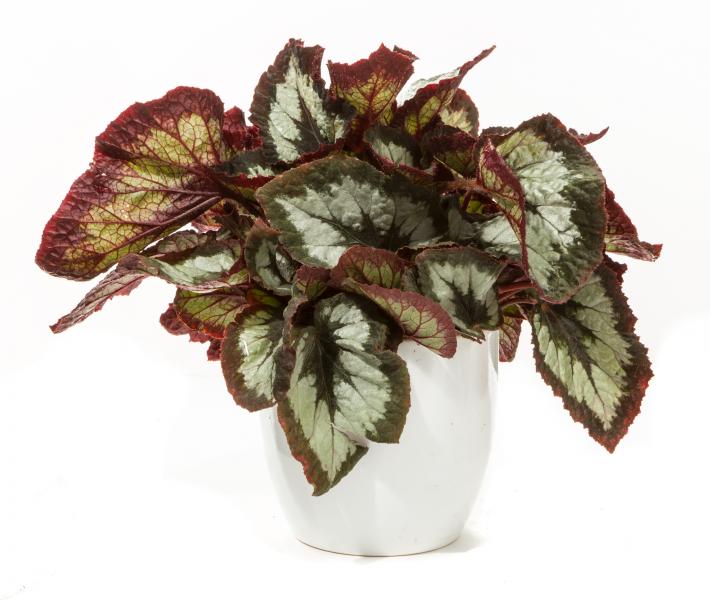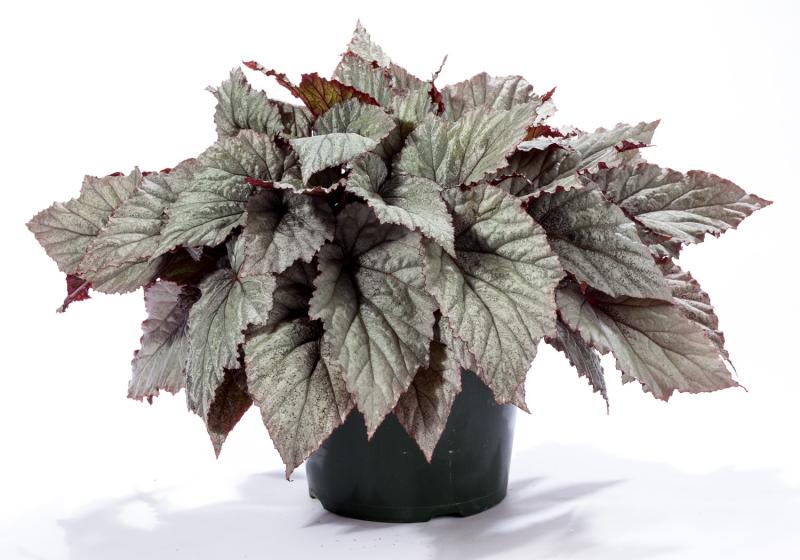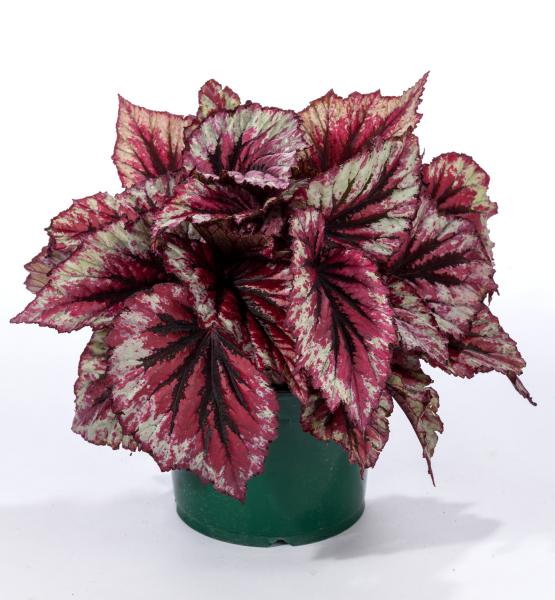Crop Culture Report: Rex Begonia Shadow King Series
 Rex begonias are native to the tropical and subtropical regions of South and Central America, Africa and Asia. They have advanced as understory plants requiring a good amount of shade to flourish. The rex begonia varieties available today are hybrids of many species and have been primarily cultivated for use as tropical indoor house plants.
Rex begonias are native to the tropical and subtropical regions of South and Central America, Africa and Asia. They have advanced as understory plants requiring a good amount of shade to flourish. The rex begonia varieties available today are hybrids of many species and have been primarily cultivated for use as tropical indoor house plants.
The Shadow King rex begonia series includes selections which are compact with smaller leaves and a mounded habit which will finish nicely in 4-inch containers. As part of the assortment, there are solid colors like ‘Shadow King Lava Red’ and ‘Shadow King Pink’. Other selections bring in swirl patterns or stripes of burgundy, red, shiny silvers, rose and green. The most recent introductions include a black and silver variety called Tuxedo and a beautiful multicolored striped variety, Cherry Mint.
Shadow King begonias are part of the Green Fuse Lifestyle Plants category. This collection of plants can be successfully displayed outdoors in a shady or protected patio area. We suggest mixing Shadow Kings with other tropical foliage and shade-loving flowering plants, creating a beauty container garden. These ‘Lifestyle’ planters can be enjoyed outside throughout the spring and summer, then brought indoors and placed next to a sunny window for the winter.
Temperature Requirement
The optimum temperature to maximize growth and continue optimum root development is 74 to 77° F days and 63 to 65° F nights. Be sure to place rex begonias in a house that will maintain a warm and constant temperature. Growing at cooler temperatures will delay finishing, extending the overall production time by weeks.

‘Shadow King Cool White’
Media and pH Requirement
The fine root system of begonias will not respond well to a continuously saturated soil. Allow the media to dry slightly between irrigations, especially during the low light winter months. This slight drying of the soil will ensure healthy root development, which is key to producing a quality crop. When producing finished plants late spring through summer, Rex Begonias require a consistent moisture level so the soil should not dry out completely. Symptoms of excess drying and wilting are brown margins and cupping of leaves. Be careful not to transplant rooted liners below new soil line (the crown of plant should not be covered with soil).
Rex begonias grow well in a broad pH range but prefer a more acidic media. A range of 5.7 to 6.2 is considered optimal in peat-based soils.
Fertilizer Requirements
Feed with a balanced fertilizer at 100- to 150-ppm nitrogen. The optimal soil EC is 0.8 to 1.2 in a peat-based mix. Even when feeding at these low rates, be diligent that salts don’t rise above 1.3 Millimhos. All begonias will “stall” if EC levels are too high. The plant foliage will develop and dull, grey green color and overall growth will stop.

‘Shadow King Cherry Mint’
Light Level/Shade Level
For the first two weeks after transplant, grow with slightly lower light levels to allow a proper adjustment to the environment. Light levels of 800 to 1,000 foot-candles are ideal for this transitional period. Then after this transition, grow on at 1,500 to 2,200 foot-candles. For most areas of the country, consider shading April 1 at 30 to 50 percent and then from mid-June through the summer, 65 to 75 percent. For high light regions of the country like the southwest, year round protection would be necessary. Excessively high light levels can cause stunting of plants and scalding
of leaves.
Growth Regulators
Some of the larger growing varieties may require a growth regulator to tone plants or maintain a desired size. For those varieties, we recommend Cycocel spray applications at 750 ppm. Other products that are effective include Bonzi at a 1-ppm drench and Sumagic at 1- to
2-ppm drench.
Disease and Insect Pests
While rex begonias are relatively problem free, aphids, mites and mealybugs are potential insect pests. Botrytis, Pythium and Phytophthora along with powdery mildew are possible disease issues. Botrytis pressure will increase in crops grown in poly houses without good air movement and when finishing at cooler temperatures. Botrytis will reveal itself as small brown dots on the leaves and will spread very quickly from infected plants. Spray a broad-spectrum fungicide at regular intervals to guard against both Botrytis and powdery mildew during cool, low light periods of the year. A fungicide drench targeting water molds should be applied one week after transplant and again four to five weeks later.


 Video Library
Video Library 




















